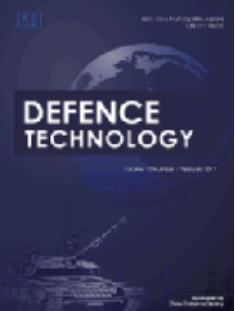利用优化的机器学习模型准确预测爆炸引起的地面振动强度
IF 5.9
Q1 ENGINEERING, MULTIDISCIPLINARY
引用次数: 0
摘要
在矿山和岩土工程中,由峰值颗粒速度(PPV)量化的爆破引起的地面振动是降低环境和结构风险的关键因素。准确的PPV预测通过最大限度地减少不利影响和确保法规遵从性,促进更安全、更可持续的爆破作业。本研究提出了一种先进的预测框架,将CatBoost (CB)与蝙蝠算法(Bat)、麻雀搜索算法(SSA)、蝴蝶优化算法(BOA)和蚱蜢优化算法(GOA)等自然优化算法相结合。利用来自伊朗Sarcheshmeh铜矿的综合数据集,使用关键绩效指标(如协议指数(IoA)、纳什-苏特克利夫效率(NSE)和决定系数(R2)来开发和评估这些模型。混合CB-BOA模型的预测准确率最高(R2 = 0.989),预测误差最低。SHAP分析认为Distance (Di)是影响PPV最大的变量,不确定性分析认为CB-BOA是最可靠的模型,预测区间最窄。这些发现突出了混合机器学习模型在改进PPV预测方面的有效性,有助于改进爆炸设计策略,提高结构安全性,减少采矿和岩土工程中的环境影响。本文章由计算机程序翻译,如有差异,请以英文原文为准。
Accurate prediction of blast-induced ground vibration intensity using optimized machine learning models
Blast-induced ground vibration, quantified by peak particle velocity (PPV), is a crucial factor in mitigating environmental and structural risks in mining and geotechnical engineering. Accurate PPV prediction facilitates safer and more sustainable blasting operations by minimizing adverse impacts and ensuring regulatory compliance. This study presents an advanced predictive framework integrating CatBoost (CB) with nature-inspired optimization algorithms, including the Bat Algorithm (BAT), Sparrow Search Algorithm (SSA), Butterfly Optimization Algorithm (BOA), and Grasshopper Optimization Algorithm (GOA). A comprehensive dataset from the Sarcheshmeh Copper Mine in Iran was utilized to develop and evaluate these models using key performance metrics such as the Index of Agreement (IoA), Nash-Sutcliffe Efficiency (NSE), and the coefficient of determination (R2). The hybrid CB-BOA model outperformed other approaches, achieving the highest accuracy (R2 = 0.989) and the lowest prediction errors. SHAP analysis identified Distance (Di) as the most influential variable affecting PPV, while uncertainty analysis confirmed CB-BOA as the most reliable model, featuring the narrowest prediction interval. These findings highlight the effectiveness of hybrid machine learning models in refining PPV predictions, contributing to improved blast design strategies, enhanced structural safety, and reduced environmental impacts in mining and geotechnical engineering.
求助全文
通过发布文献求助,成功后即可免费获取论文全文。
去求助
来源期刊

Defence Technology(防务技术)
Mechanical Engineering, Control and Systems Engineering, Industrial and Manufacturing Engineering
CiteScore
8.70
自引率
0.00%
发文量
728
审稿时长
25 days
期刊介绍:
Defence Technology, a peer reviewed journal, is published monthly and aims to become the best international academic exchange platform for the research related to defence technology. It publishes original research papers having direct bearing on defence, with a balanced coverage on analytical, experimental, numerical simulation and applied investigations. It covers various disciplines of science, technology and engineering.
 求助内容:
求助内容: 应助结果提醒方式:
应助结果提醒方式:


